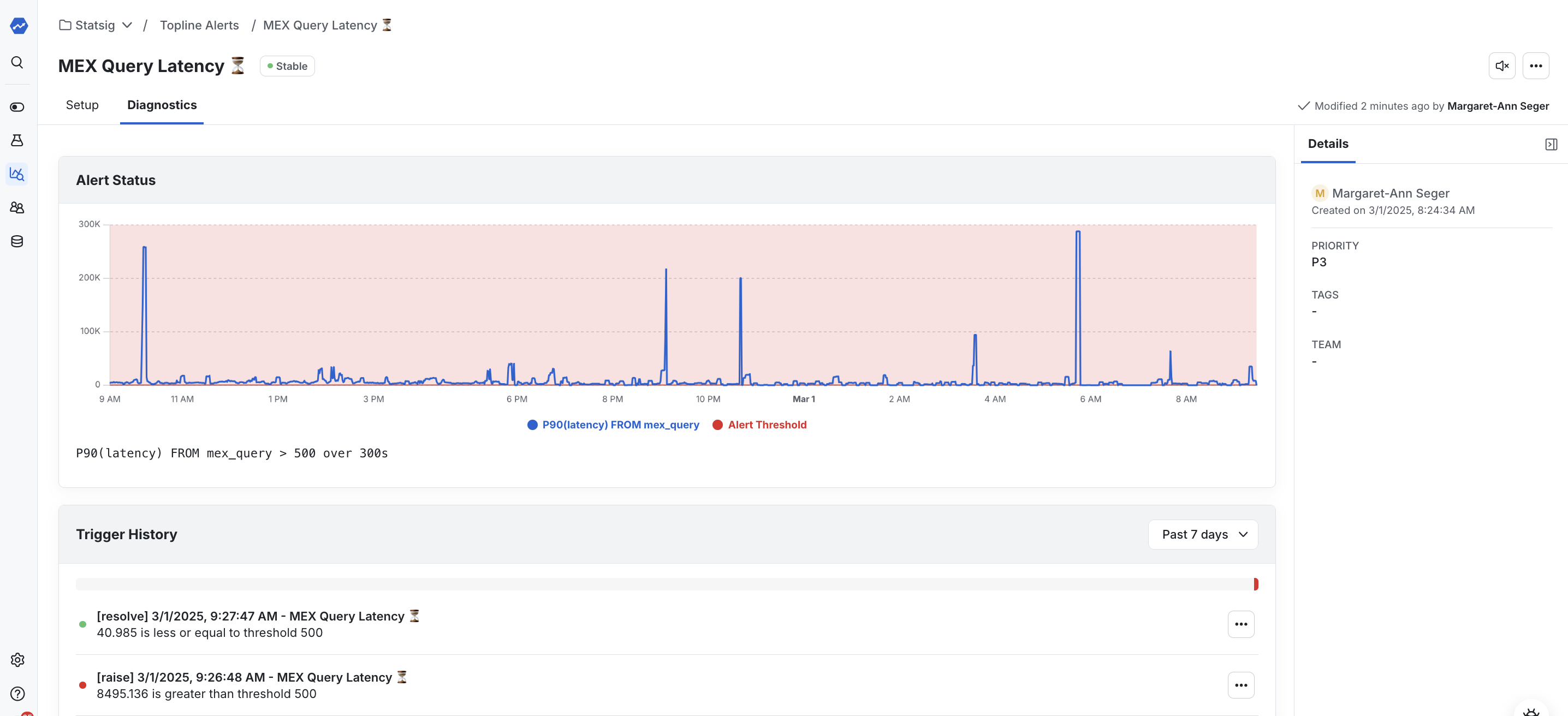| Alert Condition Type | When to Use | Example |
|---|---|---|
| Threshold | Use when you want to stay above or below a fixed number. | “Alert me when P90 latency spikes above 15 seconds.” |
| Change | Use when the absolute size of the change matters. | “Alert me when hourly P90 latency increases by 10 seconds.” |
| Change (%) | Use when the relative size of the change matters more than raw numbers. | “Alert me when hourly P90 latency increases by 50%.” |
Creating a Topline Alert
1
Navigate to Topline Alerts
Go to Analytics → Topline Alerts in the product menu.
2
Create a New Alert
Click +Create and give the new alert a name.
3
Select the Event or Metric Source
Pick the data you want to monitor.
- On Statsig Warehouse Native: Select a Metric Source, filter, and group by your desired dimensions.
- On Statsig Cloud: Select the event, aggregation, filters, and group-by conditions for this alert.
We’re setting up an alert to monitor P90 latency for
mex_query events, filtering out internal employee queries and grouping by the hadGroupBy dimension.
4
Review the Alert Preview
The preview shows how your metric is trending with the current setup. Confirm values look correct, or open the metric in Metrics Explorer for deeper analysis.

5
Set Alert Conditions
The preview updates along with each change. Define the:
- Condition type (threshold, change, change %)
- Directionality
- Alert and Warn values
- Evaluation window

6
Add Notifications
Notifications go to email, the Statsig Console, and Slack (if connected). Project-wide defaults live in Settings.
- Draft a clear, actionable message subscribers receive when the alert fires.
- Add subscribers.
- Set alert priority.
- Configure re-notification rules if alerts should resend while conditions hold.
7
Save and Monitor
Once saved, triggered alerts appear at the top of the page. From here you can:
- View samples of the event.
- Open the trend in Metrics Explorer.
- Mute the alert temporarily if it is noisy or already under investigation.

Diagnostics
Head to the Diagnostics tab to review alert history, inspect samples, jump into Metrics Explorer, or mute noisy alerts.
Interested in More?
- 👉 Check out how to create a Topline Alert on log lines
- 🔔 Learn how to set up team Slack notifications

